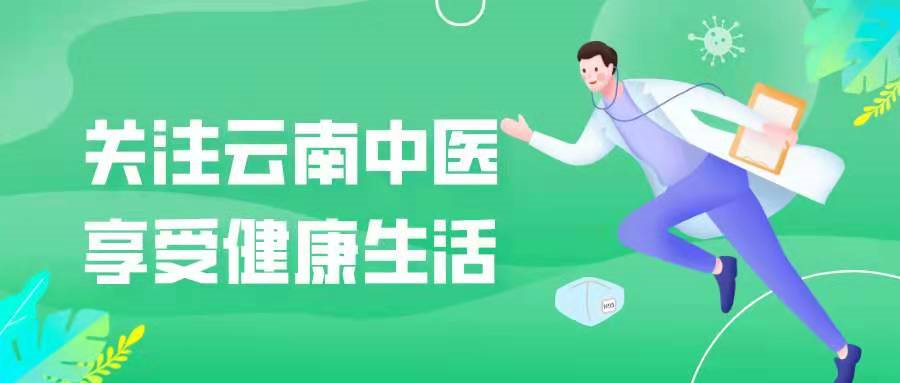This public account is hosted by the Yunnan Provincial Administration of Traditional Chinese Medicine. If you have not followed yet, please click the blue “Yunnan TCM” above to follow.

Diabetic nephropathy, also known as diabetic glomerulosclerosis, is one of the severe chronic microvascular complications of diabetes. Once diagnosed, the condition will gradually progress and ultimately develop into end-stage renal disease, which has a poor prognosis and is one of the leading causes of death among diabetic patients. Having practiced medicine for over 30 years, I have accumulated some clinical experience, and I would like to share my clinical experience in treating diabetic nephropathy using the method of supporting the right and expelling pathogenic factors.

Etiology and Pathogenesis
In Traditional Chinese Medicine (TCM), early diabetic nephropathy originates from “Xiao Ke” (消渴), which is classified as “Xiao Ke kidney disease”. Relevant records can be found in TCM literature under terms such as “Xu Lao” (虚劳), “Niao Zhuo” (尿浊), and “Xiao Shen” (消肾). The etiology of diabetic nephropathy is quite complex, primarily attributed to insufficient congenital endowment, dietary irregularities, emotional disturbances, excessive labor, and prolonged Xiao Ke.
I believe that the main pathogenesis of diabetic nephropathy is a combination of deficiency and excess, with a mix of deficiency and excess symptoms. The deficiency is mainly reflected in the dysfunction of the organs, particularly the lungs, spleen (stomach), and kidneys, while the excess is manifested in three aspects: external wind, dampness, and blood stasis.
The kidneys govern water and are responsible for storage; if the kidneys are deficient, water will lose its regulation and flow erratically. The lungs govern the regulation of water and are the upper source of water; if the lung’s defensive Qi is not solid, it cannot regulate the water pathways. The spleen governs transformation and transportation; if the spleen Qi is deficient, it cannot control water, leading to edema. As the condition progresses, the lungs, spleen (stomach), and kidneys all weaken, resulting in overall body deficiency, and the five organs and six bowels lose their warmth and nourishment, leading to disharmony in Qi and blood, and the leakage of essence, resulting in edema and proteinuria. Among the excess symptoms, “wind is the chief of all diseases”; wind pathogens harm the lungs, and if the lung’s defensive Qi is not solid, its functions of dispersing and descending are impaired, making it unable to regulate the three burners and distribute essence; the generation and function of Qi mainly depend on the spleen and lungs, thus the root of Qi deficiency can also be attributed to the spleen and lungs. At the same time, external wind invades the body, damaging the righteous Qi, which exacerbates the spleen (stomach) dysfunction; if the spleen is deficient, it cannot differentiate between clear and turbid, and wind pathogens harm the kidney collaterals, leading to kidney deficiency and inability to store essence, resulting in “Niao Zhuo” (尿浊).


Pattern Differentiation and Treatment
1. Application of Supporting the Right in Treating Diabetic Nephropathy
The “Jing Yue Quan Shu: Treatise on Edema” states: “All symptoms of edema are related to the spleen, lungs, and kidneys. Water is the most yin, thus its root is in the kidneys; water transforms into Qi, thus its manifestation is in the lungs; water fears earth, thus its regulation is in the spleen.” If the lungs are deficient, they fail to regulate the water pathways; if the spleen is deficient, it cannot transform and transport, and if the kidneys are deficient, they cannot open and close, leading to symptoms such as metabolic disorders of water, edema, and facial swelling. The “Yi Xue Xin Wu: Three Consumptions” states, “For treating upper consumption, moisten the lungs and clear the stomach; for treating middle consumption, clear the stomach and nourish the kidneys; for treating lower consumption, nourish the kidneys and supplement the lungs,” indicating that the method of supporting the right in treating diabetic nephropathy should consider the lungs, spleen (stomach), and kidneys.
(1) Tonifying the Kidneys
The “Song: Sheng Ji Zong Lu” states, “If Xiao Ke persists for a long time, the kidney Qi is damaged… water accumulates in the body, leading to edema.” Kidney deficiency results in the failure to store essence, leading to the leakage of essence and retention of dampness. “Injuries to the five organs will eventually affect the kidneys”; prolonged illness will inevitably harm the kidneys, and kidney deficiency runs through the entire pathological process of diabetic nephropathy, commonly seen in three aspects: deficiency of Qi and Yin, deficiency of kidney Yin, and deficiency of both Yin and Yang.
For Qi and Yin deficiency, the treatment should focus on tonifying Qi and nourishing Yin, and tonifying the kidneys to generate fluids. Commonly used herbs include Huang Qi (Astragalus) 30g, Dang Shen (Codonopsis) 15g, Sheng Di (Rehmannia) 15g, Han Lian Cao (Eclipta) 15g, Dan Pi (Moutan) 15g, Shan Zhu Yu (Cornus) 15g, Shan Yao (Dioscorea) 15g, Fu Ling (Poria) 15g, Bai Zhu (Atractylodes) 15g, Chao Du Zhong (Eucommia) 15g, Huai Niu Xi (Achyranthes) 15g, Yi Yi Ren (Job’s Tears) 15g, Fen Ge (Pueraria) 15g, Mai Dong (Ophiopogon) 15g.
For kidney Yin deficiency, the treatment should focus on nourishing Yin and consolidating the kidneys. Commonly used herbs include Nu Zhen Zi (Ligustrum) 15g, Han Lian Cao (Eclipta) 15g, Sheng Di (Rehmannia) 15g, Dan Pi (Moutan) 15g, Shan Yao (Dioscorea) 15g, Fu Ling (Poria) 15g, Gou Qi Zi (Goji Berries) 15g, Zhi Mu (Anemarrhena) 15g, Bai Zhu (Atractylodes) 15g, Chao Du Zhong (Eucommia) 15g, Huai Niu Xi (Achyranthes) 15g, Chao Xu Duan (Dipsacus) 15g, Shi Wei (Phragmites) 15g, Mai Dong (Ophiopogon) 15g, Fen Ge (Pueraria) 15g.
For deficiency of both Yin and Yang, the treatment should focus on nourishing Yin and warming Yang, and tonifying the kidneys to consolidate. Commonly used herbs include Sheng Di Huang (Rehmannia) 15g, Shan Yu Rou (Cornus) 15g, Shan Yao (Dioscorea) 15g, Fu Ling (Poria) 15g, Bai Zhu (Atractylodes) 15g, Gou Qi Zi (Goji Berries) 15g, Wu Wei Zi (Schisandra) 15g, Rou Gui (Cinnamon) 10g, Yi Zhi Ren (Alpinia) 15g, Huang Qi (Astragalus) 20g, Ba Ji Tian (Morinda) 15g, Da Fu Pi (Citrus) 15g, Mu Xiang (Aucklandia) 5g.
(2) Strengthening the Spleen
In the “Bian Zheng Lu”, Qing Dynasty physician Chen Shi Duo stated: “The symptoms of Xiao Ke are due to spleen damage and kidney failure; if the spleen is damaged, the earth cannot overcome water, and if the kidneys fail, water cannot resist fire. The combination of both leads to disease. If the spleen is not damaged and the kidneys are not failing, there will be no symptoms of Xiao Ke.” The spleen is the foundation of postnatal life and the source of Qi and blood transformation. If the spleen Qi is weak, the essence of food cannot be transformed, and the kidney essence cannot be nourished. Therefore, clinical treatment often focuses on tonifying the spleen and benefiting Qi. Commonly used herbs include Huang Qi (Astragalus) 30g, Shan Yao (Dioscorea) 15g, Fu Ling (Poria) 15g, Chai Hu (Bupleurum) 15g, Bai Shao (Paeonia) 15g, Mu Xiang (Aucklandia) 5g, Sha Ren (Amomum) 15g (added later), Dang Shen (Codonopsis) 15g, Chao Yi Yi Ren (Job’s Tears) 30g, Bai Zhu (Atractylodes) 15g, Chen Pi (Citrus) 15g, Chao Ji Shi (Hawthorn) 15g, Chao Hou Po (Magnolia) 15g.
(3) Nourishing the Lungs
In the “Ling Shu: Ben Cang”, it is stated: “If the lungs are weak, it is easy to suffer from Xiao Ke.” If the lungs fail to disperse and descend, the water pathways are obstructed, affecting the kidneys, leading to edema and difficulty in urination, even urinary retention. The lung fluids and kidney water cannot communicate and support each other, resulting in lung and kidney Yin deficiency. The treatment should focus on nourishing the lungs and kidneys, benefiting Qi, and consolidating the exterior. Commonly used herbs include Nu Zhen Zi (Ligustrum) 15g, Mo Han Lian (Eclipta) 15g, Sheng Di (Rehmannia) 15g, Du Huo (Angelica) 15g, Ge Gen (Pueraria) 15g, Fu Ling (Poria) 15g, Bai Zhu (Atractylodes) 15g, Sang Bai Pi (Mulberry) 15g, Fang Feng (Saposhnikovia) 15g, Huang Qi (Astragalus) 15g, Mai Dong (Ophiopogon) 15g, Dang Shen (Codonopsis) 15g, Wu Wei Zi (Schisandra) 15g, Chao Yi Yi Ren (Job’s Tears) 30g.

2. Application of Expelling Pathogenic Factors in Diabetic Nephropathy
Zhang Zi He in “Ru Men Shi Qin” states: “The disease is not inherent to the person, but arises from external or internal factors, all of which are pathogenic Qi.” I believe that in treating diseases, one should seek the root while also addressing the symptoms; in prolonged Xiao Ke, the deficiency becomes more deficient, and the excess becomes more excessive. At different stages, the focus of the pathogenesis varies, and treatment should weigh the balance of righteousness and pathogenic factors. The “Nei Jing” states, “If there is excess, then purge it.” When pathogenic Qi invades, one should not indiscriminately tonify but should primarily focus on expelling pathogenic factors.
(1) Expelling Wind
The “Suwen: Treatise on Febrile Diseases” states: “Wherever the evil gathers, its Qi must be deficient.” The “Ling Shu: Five Transformations” states: “I have heard that the onset of all diseases begins with wind, rain, cold, and heat, entering through the hair and skin… or causing Xiao Ke.” It is believed that the invasion of external pathogens is an important cause of Xiao Ke. Wind is the chief of the six evils, invading the lung’s defensive Qi, leading to impaired regulation and resulting in edema. Wind pathogens invade the exterior, affecting the kidneys, or enter the meridians directly, harming the kidneys, leading to symptoms such as edema, aversion to wind, and proteinuria. The treatment should focus on expelling wind and benefiting Qi, nourishing the lungs and kidneys. Commonly used herbs include Fang Feng (Saposhnikovia) 15g, Jing Jie (Schizonepeta) 15g, Huang Qi (Astragalus) 20g, Bai Zhu (Atractylodes) 15g, Fu Ling (Poria) 15g, Chan Tui (Cicada) 15g, Jie Geng (Platycodon) 15g, Fa Ban Xia (Pinellia) 15g, Chen Pi (Citrus) 15g, Yu Xing Cao (Houttuynia) 15g, Niu Bang Zi (Arctium) 15g, Bei Sha Shen (Glehnia) 15g.
(2) Expelling Dampness
The “Sheng Ji Zong Lu: Xiao Ke” states: “Excessive drinking in Xiao Ke leads to dampness in the spleen, which cannot be controlled, resulting in overflow and erratic movement in the skin and muscles, leading to edema and fullness.” Spleen and stomach deficiency leads to impaired transformation and transportation, resulting in water and dampness retention; kidney deficiency cannot transform Qi and move water, leading to internal stagnation of dampness. Prolonged exposure to damp environments, rain, and water can invade internally, obstructing the spleen and stomach, impairing their functions of ascending clear and descending turbid, leading to edema. The treatment should focus on warming the middle, benefiting water, awakening the spleen, and tonifying the kidneys. Commonly used herbs include Mu Xiang (Aucklandia) 5g, Sha Ren (Amomum) 15g (added later), Dang Shen (Codonopsis) 15g, Fu Ling (Poria) 15g, Bai Zhu (Atractylodes) 15g, Chen Pi (Citrus) 15g, Fa Ban Xia (Pinellia) 10g, Deng Zhan Hua (Lonicera) 15g, Chao Yi Yi Ren (Job’s Tears) 30g, Da Fu Pi (Citrus) 15g, Shi Wei (Phragmites) 10g, Jiao Shan Zha (Hawthorn) 15g, Chao Shen Qu (Fermented Wheat) 15g, Liu Yue Xue (Lonicera) 1 bag, Gan Cao (Licorice) 5g.
(3) Resolving Stasis
Tang Rong in “Xue Zheng Lun: Thirst” states: “If there is blood stasis causing thirst, it is due to the generation of fluids rooted in kidney water… If there is blood stasis, Qi is obstructed, and cannot rise; thus, water and fluids cannot be distributed with Qi, leading to thirst… If blood is removed, there will be no thirst.” Prolonged illness leads to blood stasis, and blood stasis results in insufficient generation of Qi and blood; Qi and blood deficiency further exacerbates blood stasis, worsening the condition. The treatment should focus on invigorating blood, resolving stasis, and benefiting Qi and blood. Commonly used herbs include Deng Zhan Xi Xin (Asarum) 15g, Dan Shen (Salvia) 15g, Dang Gui (Angelica) 15g, Chuan Xiong (Ligusticum) 15g, Tao Ren (Peach Kernel) 15g, Hong Hua (Carthamus) 5g, Yi Mu Cao (Leonurus) 15g, Dang Shen (Codonopsis) 15g, Da Huang (Rhubarb) 15g, Shan Yao (Dioscorea) 15g, Huang Qi (Astragalus) 20g, Bai Zhu (Atractylodes) 15g, Bai Shao (Paeonia) 15g.

Expert of this Issue: Li Qi
Renowned TCM physician in Yunnan Province, Master’s degree supervisor, leader of key TCM specialties in Yunnan Province, and head of the nephrology department in Yunnan Province.
Specializes in: Kidney diseases, kidney stones, proteinuria, renal insufficiency, urinary tract infections, IgA nephropathy, renal insufficiency, low back pain, nephrotic syndrome, chronic renal failure, hypertensive nephropathy.

Scan to consult
Editor: Yang Zhengrui


